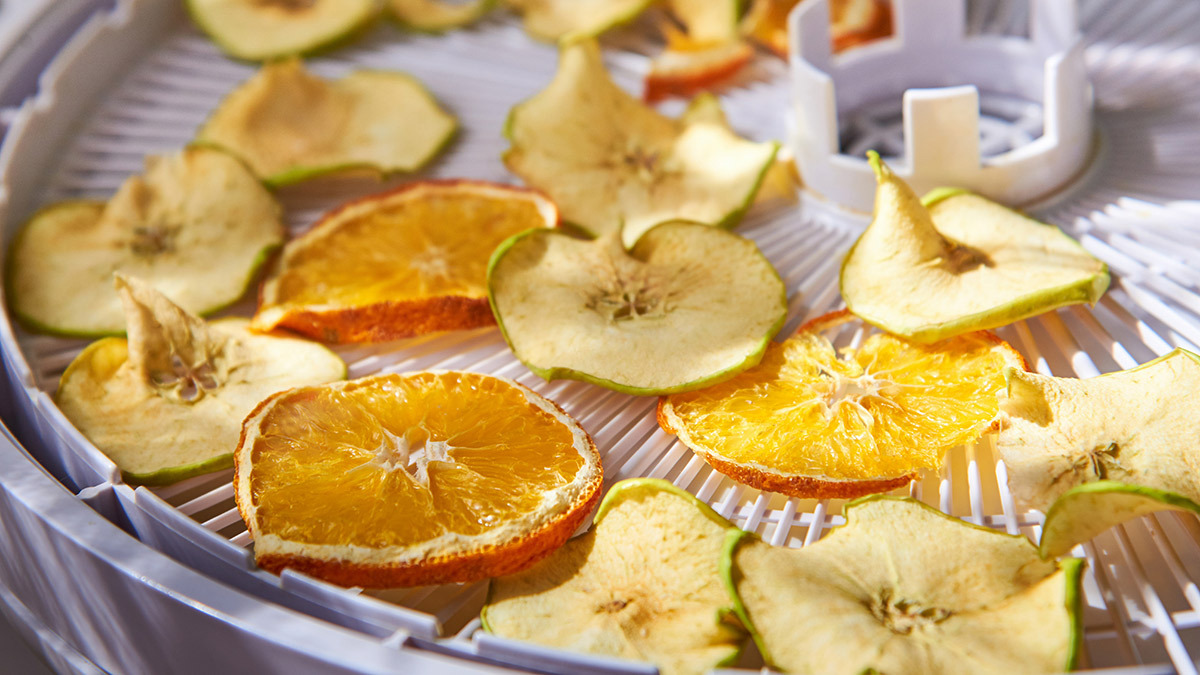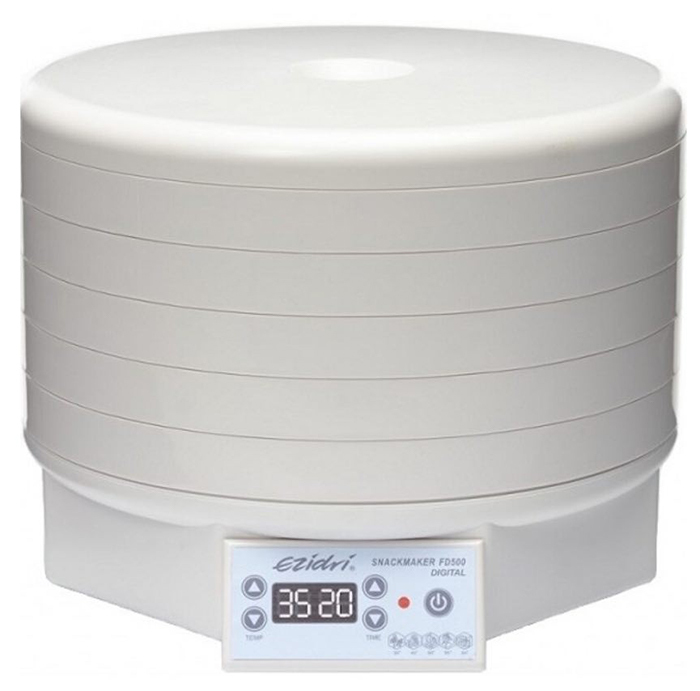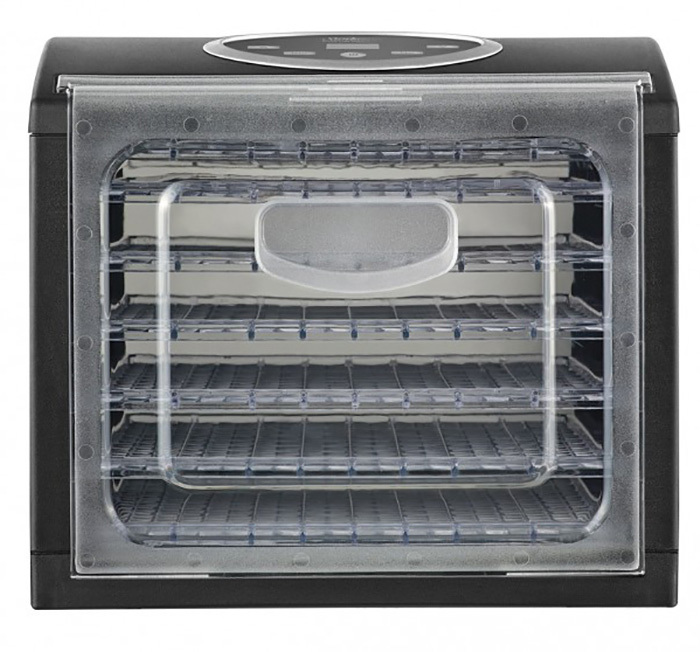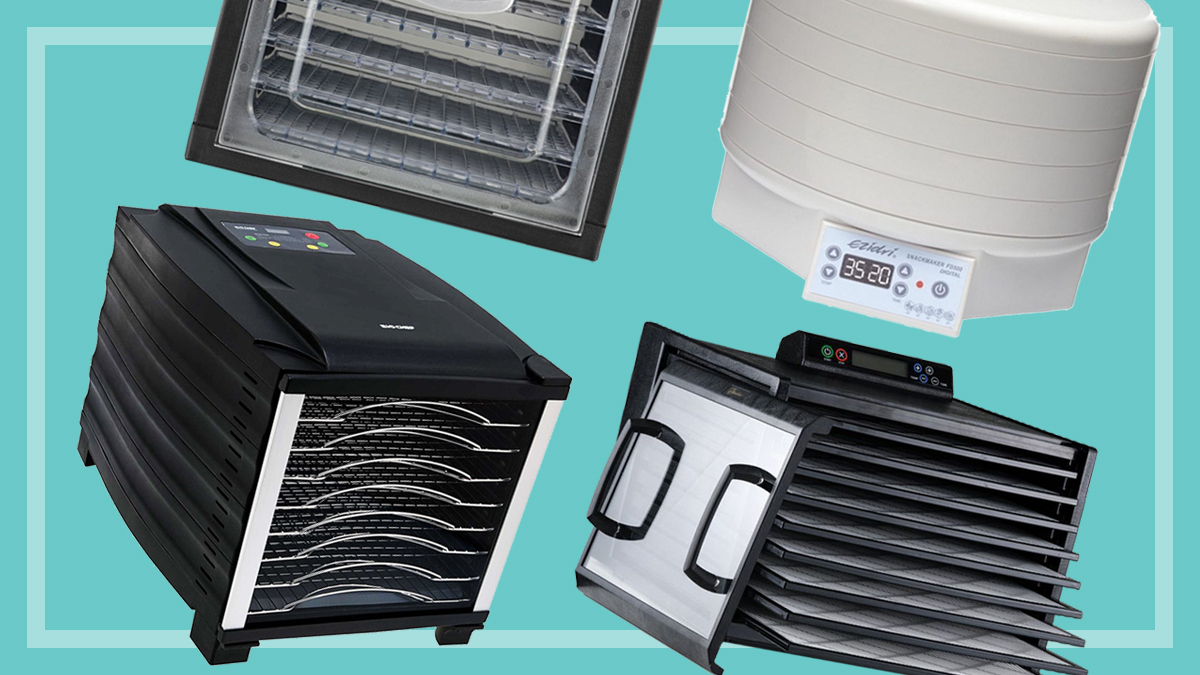Get our independent lab tests, expert reviews and honest advice.
How to find the best food dehydrator

If you’re interested in preserving food and preparing your own snacks that are free from added sugar and preservatives, then a food dehydrator might be just for you. Dehydrated fruits and vegetables make great snacks for the whole family to enjoy, they’re easy to carry around with you and they have a long shelf life.
On this page:
- What's a food dehydrator?
- Should you buy one?
- Types of food dehydrators
- Can you use an oven to dehydrate food?
- How long does it take to dehydrate food?
- Food dehydrators and food safety
- Does dehydrating food remove nutrients?
What’s a food dehydrator?
Food dehydrators have a heating element and a fan that circulates warm air through the unit to dry and remove moisture from foods. They operate at low temperatures of around 50–60°C (70°C for meats) for an extended period of time. A dehydrator intensifies the flavour of food and the finished product keeps well for a long time.
The food dehydrators we tested range in price from $110 to $599.
Should you buy one?
This depends on how often you think you’ll be dehydrating foods. If you’re already into preserving, have a vegie patch with an abundance of fruit or vegetables, or like to take advantage of when produce is cheap and in abundance, a dehydrator would be handy.
Bear in mind, they’re a bulky appliance that can take up considerable space on your benchtop and may be difficult to store in a cupboard.
You’ll also need to do your research before you get into dehydrating. There are different levels of dehydration (e.g. crispy or chewy) and different variables to consider for the fruit or vegetable you’re using that affect how long the process will take.
Manufacturer’s instructions can sometimes be vague for timings, and getting the right result is critical in terms of food safety.
Types of food dehydrators
There are two types of food dehydrators:

Stackable
- This dehydrator is round with stackable trays.
- The heating element and fan is either situated at the top or bottom of the unit.
- You’ll need to periodically rotate the trays for optimal and even drying.
- If you’re drying larger pieces of food, the shelves may not stack properly if food is obstructing the shelf above.
- You can buy extra shelves with some models.

Box
- This type has shelves that slide in and out, much like an oven.
- The heating element and fan are usually at the back of the unit, requiring less shifting of shelves throughout the process.
- If you’re dehydrating larger pieces of food, you may need to remove trays, giving you fewer trays to work with.
Can you use an oven to dehydrate food?
Yes, as long as your oven is fan-forced and can turn down to low temperatures (50–90°C), then it can be used to dehydrate foods. Our testing found ovens will give you similar or even better results, and more importantly, in far less time than using a dedicated food dehydrator. You’ll also be saving valuable bench and storage space if you opt to use your oven.
When testing dehydrators, our home economist also dehydrated the same foods using an oven. The oven produced excellent results for each test.
See how we test food dehydrators for more on our testing methods.
How long does it take to dehydrate food?
Dehydrating is a long process and can take anywhere from 2.5 to 16 hours. The time taken depends on the moisture content of the food you’re dehydrating and the result you want to achieve. The longer you dehydrate food, the crispier the result; the shorter you dehydrate food, the chewier the result. You’ll also need to check them regularly (and in some cases rotate the shelves/trays) throughout the process.
Food dehydrators and food safety
Food safety is particularly important when using a food dehydrator. Any moisture remaining at the end will cause the food to spoil quickly and go mouldy. You can check for moisture by:
- breaking or tearing a piece of the food and squeezing it – if any liquid or moisture comes through, it’s not ready yet
- placing the dehydrated food in a zip lock bag and leaving for a few minutes – if you notice droplets inside the bag, then it’s not ready.
Storage is equally as important when it comes to the longevity of dehydrated foods. Keeping the food free from air and moisture is key. If you’re using jars, sterilise them first, ensure they’re dried properly and make sure you seal them tightly so no air gets in.
If in doubt, it’s always better to over dry rather than under dry.
Does dehydrating food remove nutrients?
The presence of heat and air during dehydration can destroy certain vitamins (such as vitamins A and C). Removing the moisture (water) during the drying process also concentrates the calorie and sugar content of foods.
In short, dried fruits and vegetables are great as a snack and for additions to meals (cereal, yoghurt, ice cream etc.) but they shouldn’t replace fresh fruit and vegetables.
What else to look for
Food dehydrators come with a variety of features. Some useful features to look for include:
Adjustable temperature control
This is an important feature if you’re going to dehydrate a variety of foods.
Timer
Lets you set and forget. A timer that alerts you when the process is finished is also handy.
Fruit roll tray
Lets you create fruit and vegetable leathers (dehydrated fruit or vegetable puree, or roll-up type snacks)
Automatic switch-off
The unit will automatically switch off when the process is finished.
Number of shelves/trays
Depending on how much you’re going to be dehydrating depends on the size you’ll buy. Bear in mind that even though a product might have nine trays, they’re usually closely spaced, so if you’re dehydrating larger pieces of food, you may need to remove some.
Tray material
Plastic trays are lightweight while stainless steel trays are more durable.
Noise
This is hard to test instore, but keep in mind that while the machines aren’t very noisy, it can still become annoying as they run for so long.






